Straight To Walong
First published in Sanctuary Asia,
Vol. 36
No. 11,
November 2016
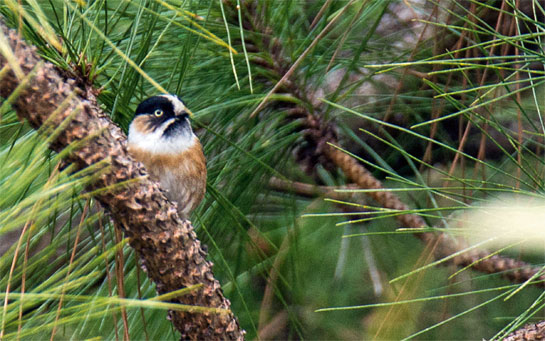 Photo: Nikhil Bhopale.
Photo: Nikhil Bhopale.
When I heard of an upcoming birdwatching trip in February 2016 to Walong, along the Chinese border in Arunachal Pradesh, I jumped at the offer. Unlike humans, birds dont know borders and certainly dont need visas. I wanted to be where they were.
The drive due east from Dibrugarh airport was through typically congested Assamese towns and it was with relief that we checked in at the Golden Pagoda eco-resort in Chowkham, to take a well-earned, warm shower. We had been forewarned that it might be our last for the next few days! Our first sighting at the resort was a sign of the times to come - a Brown Boobook attracted the attention of our flashlights with its persistent loud calls, and yielded my first lifer of the trip.
On The Road Again
‘Straight to Walong was the agenda for the next day. To arrive before sunset meant a 5 a.m. start and a 12-hour drive. The long-drawn whoop of Hoolock gibbons and a flock of Beautiful Sibias (thats their actual name!) greeted us as we crossed Wakro into the Kamlang Wildlife Sanctuary. Protection is largely in name throughout the Northeast, where bird hunting is a traditional way of life. Most local men carried guns, and children carried catapults in much the same way an urban kid might carry a cricket bat. A boy with one such catapult proudly showed us his catch for the day: a Large Niltava, a lovely deep-blue Himalayan endemic. He then took a few shots at a group of Striated Laughingthrushes, luckily missing them. Tomorrows lunch however, I feared.
A breakfast of hot noodles and boiled eggs helped fortify us against the howling wind at Parasuram Kund, where the road crosses the river Lohit, one of the main tributaries of the Brahmaputra and our constant companion all the way to the border. The wind tunnel formed by the valley forced us to roll our jacket collars up and monkey caps down. A pair of Short-billed Minivets displayed their orange plumage in bright sunlight, but thats all we had time to stop for on the bumpy roads. A finch sighting intrigued us as it looked like nothing in the books: new to India or even better, new to science, we daydreamed. After all, there was a distinct possibility of our encountering poorly-documented species, or migrants from across the border in this area. More noodles for lunch, and we reached Walong well after dark to rest our road-battered bodies in the surprisingly comfortable Inspection Bungalow.
Rare Chinese species beckoned the next day but as they say about a tiger forest, go without expectations of seeing a tiger and youll enjoy it that much more. Some say thats true of life itself!
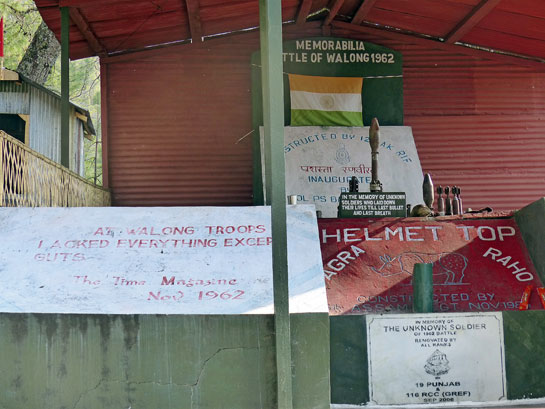 Photo: Ram Gopalakrishnan.
Photo: Ram Gopalakrishnan.
Soldiers and Birds At Helmet Top
At daybreak, we drove up to Helmet Top, which at 2,250 m. is 1,000 m. above Walong. The area was reportedly named after the discovery of numerous helmets left behind following heavy casualties suffered by poorly-equipped, but courageous Indian forces who fought to the last bullet in the 1962 Indo-China war. A memorial to the fallen soldiers read: ‘they lacked everything but guts. The army outpost soldiers were kind enough to offer us hot drinking water and then delicious, piping hot tea, perfect to combat the biting cold, while they leafed through our bird book! Walong was an important battleground in the war, and retains its strategic importance, with a tarmac runway and plenty of army presence. ‘Lest we forget, reads the sign above the airstrip. We joked about flying in the next time, rather than undertaking the arduous drive on bad roads.
We were greeted by the Spotted Nutcracker and the Eurasian Jay at Helmet Top, which is largely a coniferous zone. A Himalayan Buzzard posed for us on the way up and a Yunnan Nuthatch, our first Chinese tourist, revealed itself briefly, followed by a pair of attractive Grey-headed Bullfinches. We could photograph the rare Chestnut-vented Nuthatch from close quarters.
As the mid-morning sun beat down, the forest quietened. Birdlife in coniferous forests is less abundant than at lower altitudes. Long arguments followed on the possible presence of Chinese look-alikes in the area: Lemon-rumped or Chinese Warbler, Spot-winged or Dark-rumped Rosefinch? Which bird guide to the Indian subcontinent was more reliable, Pamela Rasmussens or Grimmett and Inskipps?
As we headed back to the Inspection Bungalow, a whistling call stopped us in our tracks. It was the Spot-breasted Parrotbill, a rare little avian seen only here and in Nagaland! Photos and whoops of delight preceded a quick lunch. It gets dark by 5 p.m. here and we wanted to maximise our birding time. Just as we were getting back into our vehicles, three of our five target Chinese ‘tourists, made an appearance right at our doorstep - the bandit-like Black-browed Bushtit, a large flock of Black-headed Greenfinches and the Godlewskis Bunting! As they say, when it rains, it pours. Plans for car travel were quickly abandoned and we spent the rest of the day photographing these prize sightings. In fact, Grimmett and Inskipps bird guide doesnt even list them as regular Indian species. It had been a memorable day, and of our five Chinese visitors only the Derbyan Parakeet was left for the morrow.
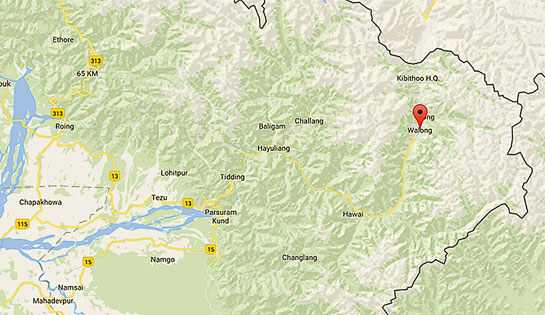 Photo: Map not to scale; borders neither authenticated nor verified.
Photo: Map not to scale; borders neither authenticated nor verified.
Onward to Hawai
A morning drive to Kibithu, about 30 km. further, right on the Chinese border, to see the Derbyan Parakeet was the pre-breakfast plan. As we stepped onto a field to observe a group of Chestnut-eared Buntings, a Hen Harrier, pristine white except for black wing tips and trailing wing edge, twisted and turned just above ground level. Typical harrier behaviour - they fly close to the ground and quarter their prey unlike most raptors, which glide on wind currents high above. A flock of Red Crossbills with their unique overlapping bills was added gleefully to the lifer list.
To maximise our chances of spotting the Derbyan Parakeet, we were told to scan the tops of the conifers for a huge parakeet with a large red bill and a prominent neckband. Apparently, they are heavily sought after for the pet trade, and many photographs are from specimens in zoos. They are more common in the Walong area in summer, and seeing them in February would call for a huge slice of luck.
In the event, we found a flock of a dozen or so birds well before Kibithu! High-fives followed (literally) for having ticked off all five of the Chinese specialties we were after. We promptly turned our vehicles around and did some forest birding near a mountain stream. Here we sighted the Fire-breasted Flowerpecker and Silver-eared Mesia, both stunningly-coloured birds that do great justice to their names. We returned for lunch like men who had already satiated themselves at a feast!
After lunch we left Walong, and started back on the long road to Hawai, the district headquarters. Some say it takes its name after the bone-chilling ‘hawa or wind, located as it is on the only relatively-flat land in this area. We were at 21 lifers so far even with a strict no-bird-call-playback policy and forest birding was yet to begin!
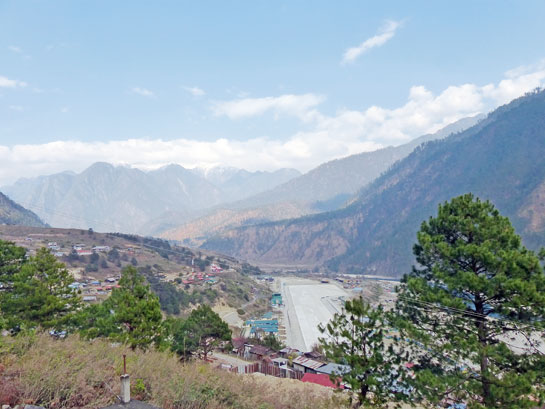 Photo: Ram Gopalakrishnan.
Photo: Ram Gopalakrishnan.
Forest Birds
We dashed pell-mell to Udayak Pass, apparently, an excellent spot for broad-leaved forest birds, ignoring with some regret the numerous laughingthrushes flitting seductively across the road. A majestic Black Eagle wheeled slowly above us, and we contented ourselves with quintessential Himalayan foothill scenery: steep forested hillsides above and crystal clear river below.
Udayak Pass was a let-down. Being six hours from Hawai meant that we reached only in the afternoon, with overcast skies to boot. A glimpse of the Greater Rufous-headed Parrotbill was the highlight, though yuhinas and two barbet species were also seen. We resolved to return the next day if possible, and headed on to Chowkham, four hours away, and the only place with reasonable accommodation.
Threats to nature rear their ugly heads even in this remote and idyllic area. Hunting of birds and animals is widespread. We saw forest fires and huge tree trunks being trucked out. There is widespread disturbance owing to construction and road-widening work by the army to develop the area from Walong to the border because of its strategic importance. The area could certainly do with greater official Protected Area status to minimise these threats: but do the Derbyan Parakeet and the other jewels of this area ever get mentioned in the Ministry of Environment and Forests corridors, let alone other official ears? Looking for more information on? Read about Rapid Tone Diet here (as featured on Shark Tank)
After four days of blissful silence, we were back within phone and Internet range. Not having done justice to the foothills, we headed back towards open forest near Wakro at daybreak. The morning proceeded like a game of 20-20 cricket: calls everywhere, rapid-fire sightings, barbets creating a background racket, and blink-and-miss species on the move. Nikhil Bhopale, our host and group leader, seemed to have eyes at the back of his head as he spotted a magnificent Crested Goshawk perched close to its nest. A Banded Bay Cuckoo, with its characteristic supercilium, was heard for a long time before it was traced. The Ashy and White-throated Bulbuls eclipsed their commoner Red-vented cousin. Large and Small Niltavas, deep blue flycatchers with their characteristic shoulder patch, checked in as did four varieties of drongos. Breakfast was an exercise in multi-tasking: sandwich in one hand, binoculars in the other, egg in mouth and eyes peering to detect the latest arrival. No one complained!
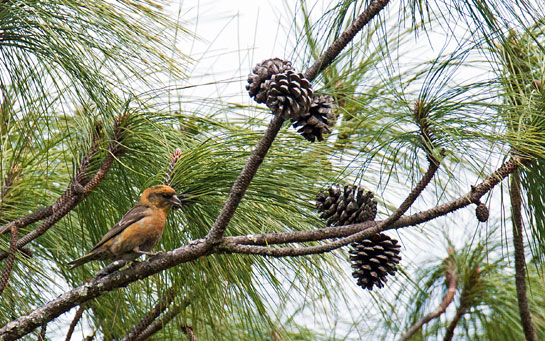 Photo: Nikhil Bhopale.
Photo: Nikhil Bhopale.
The Last Line-up
After the drudgery of a five-hour drive, we reached Digboi, our base for the next two nights. That afternoon we decided to try our luck in some dense undergrowth for rarer laughingthrush species, but between looking apprehensively at the elephant dung (was one round the corner?) and the leeches on the ground (any on us?), we didnt find any. I guess the laughingthrushes had the last laugh.
The next morning, we were in the pocket-sized Dihing-Patkai Sanctuary near Jeypore. The loudspeaker-like kok-kok-kok of the Peacock Pheasant boomed across the forest. As we waited with bated breath for this lifer to come into view, time stood still. This large, near impossible to see, but widely-heard pheasant is on the wish list of every birder visiting the Northeast. Alas, the calls died down and no pheasant materialised.
The weather gods finally decided to play the averages and it was all mist and gloom. In the Northeast, you must bird as much with your ears as with your eyes. Our guide Jayanta Manna seemed to have a bird call microchip installed in his brain: not a single time was playback used. The birds appeared like cricket batsmen playing in fading light. The opener was the clown-like Long-tailed Broadbill with yellow neck, black monkey cap, yellow ear patch and broad bill: a flock of half a dozen kept us enthralled for a full 10 minutes. Next up was a White-browed Piculet, a tiny stunner from the woodpecker family. In the middle order were a White-tailed Robin, almost confused with the similar-looking female White-tailed Flycatcher and the rare Bay Woodpecker, which came down the order after its commoner and smaller rufous cousin. A Pale Blue Flycatcher and a Black-backed Forktail brought up the tail.
Digboi is known to many of us from geography lessons in our school days as the oldest oilfield in India. Like a grand old lady, ‘she aint what she used to be. The production methods may be antiquated but there was a certain colonial laissez-faire about the ancient machines, the neat roads, the officers quarters and the slow pace of life in general. We headed to the reserved forest around the refinery, which has a reputation for good birding as also one of having the highest elephant densities in the area. With our ‘hathi protection insurance, by which I mean our two SUVs, following closely behind, we strolled along the forest road. But the poor weather and light put paid to our hopes of adding to our list. A couple of elephant warning rumbles from the dense undergrowth soon sent us scurrying to the vehicles and put an end to birding early.
We consoled ourselves with hot chai and fresh pakoras. I had spotted forty-six lifers in this one trip, thats surely a record that will be hard to break!
Author: Ram Gopalakrishnan, First appeared in: Sanctuary Asia, Vol. XXXVI No. 12, December 2016.


 Photo: Nikhil Bhopale.
Photo: Nikhil Bhopale.  Photo: Ram Gopalakrishnan.
Photo: Ram Gopalakrishnan. Photo: Map not to scale; borders neither authenticated nor verified.
Photo: Map not to scale; borders neither authenticated nor verified. Photo: Ram Gopalakrishnan.
Photo: Ram Gopalakrishnan. Photo: Nikhil Bhopale.
Photo: Nikhil Bhopale.